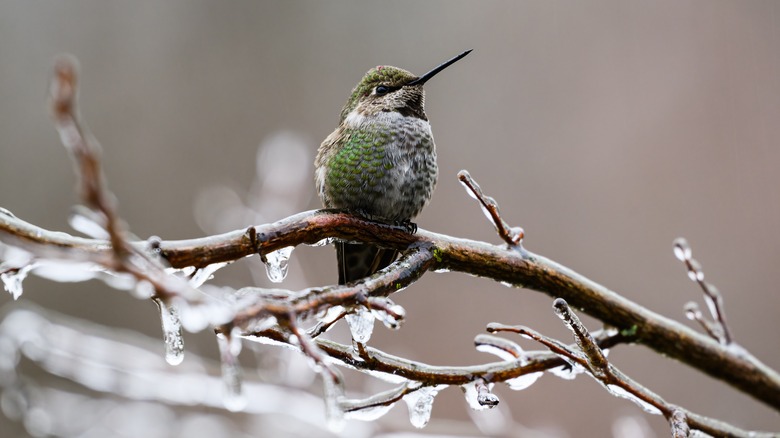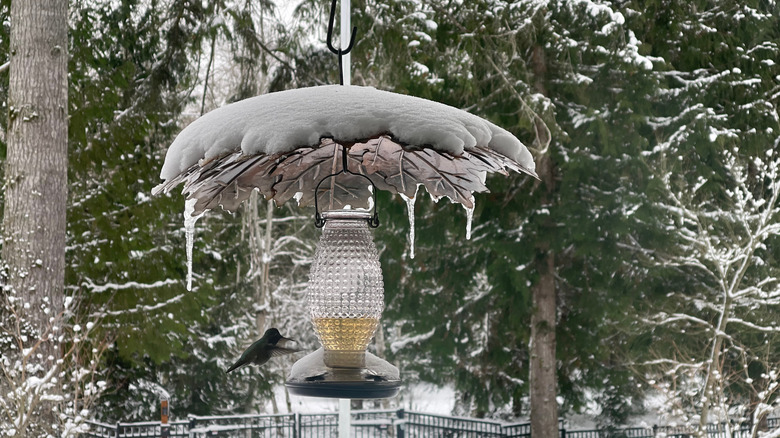The Simple Way To Keep Hummingbirds Fed & Happy In The Winter
Though some hummingbirds migrate south as the seasons change, others may stick around throughout the winter depending on where you live. If they do, they'll need as many nutrients as they can get. If you're trying to keep up with feeding hummers through the winter, you may struggle to always have a feeder out in your yard that's thawed. Fortunately, the solution may be as simple as buying an extra feeder. By having an additional feeder on hand, you can swap it out when the one in your yard starts to freeze and you bring it inside to thaw. This will ensure that your feathered friends always have fresh food to help them thrive in the bitter winter.
Since flowers with nectar tend to die back in the winter, making and providing nectar for your birds will help keep them happy and their bellies full. While your feathered friends will also seek out insects to eat during this time, they require a lot of calories due to their fast metabolisms, and providing nectar is a great way to support these birds. However, it's unusable if it's frozen. This is why it's so important to take measures to keep the nectar fresh when the birds need it most. You'll also need to continue safely cleaning your hummingbird feeders throughout winter to prevent the hummers from getting sick. Also check out the best way to keep your hummingbird feeder from freezing as temperatures drop.
Rotate hummingbird feeders to prevent freezing
If you only have one feeder, bringing it inside at night will keep it from freezing. This may seem like a good idea since hummingbirds don't feed at night; however, they often wake up from their energy-reserving sleep, known as torpor, before the sun rises, expecting to eat. When there's not food available right away, it costs these birds precious calories to emerge from their slumber. For those that know they won't wake up as early as the birds, rotating multiple feeders is a great way to keep fresh nectar available whenever the hummers are hungry. Once one is thawed, simply switch it for the one outside that has started to freeze. This may end up being easier than constantly needing to clean, refill, and thaw out the same feeder. You can swap out feeders multiple times a day, or in the morning and evening, depending on how many you're working with.
In extremely cold climates or during a harsh cold snap, the nectar in feeders may still start to harden even when following this nectar tip to keep your hummingbird feeder from freezing in winter. Luckily, there are a few other ways to help keep the nectar warmer for a bit longer. Keeping your feeder in a spot that's protected from snow and that has less wind will also help prevent the nectar's temperature from dropping as quickly. Insulating the feeder with plumber's tape could keep the cold out as well.

